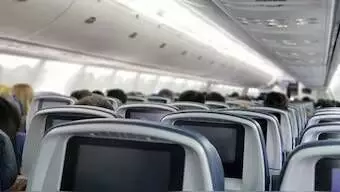Three Plane Crashes, Three Survivors in Row 11 — Is It More Than Just Luck?
Three plane crashes had survivors seated in row 11, sparking curiosity if it's a "miracle seat" or just luck near emergency exits and strong fuselage parts.
image for illustrative purpose

In a strange and almost eerie coincidence, three major plane crashes over the past few decades, spanning different airlines and countries, share one curious detail: the survivors were all seated in row 11.
This coincidence has sparked curiosity and myths online about row 11 being a “miracle seat.” But is there any real safety advantage, or is it just chance?
The Three Survivors in Row 11
1. Vishwash Kumar Ramesh – Air India Flight AI117 (2025)
On June 12, 2025, Air India Flight AI117 crashed shortly after takeoff near Ahmedabad, killing at least 270 people. Miraculously, 35-year-old Vishwash Kumar Ramesh, seated in 11A, survived. Rescuers found him conscious amid the wreckage, and experts noted his seat’s proximity to the strong “wing box” structure may have played a role.
2. Ruangsak “James” Loychusak – Thai Airways Flight TG261 (1998)
In 1998, Thai Airways Flight TG261 crashed during a landing attempt amid poor weather. Out of 146 passengers, 26 survived, including popular singer Ruangsak Loychusak, who sat in 11A. He escaped from the burning plane and later recounted his experience.
3. Kumar Nadig – Indian Airlines Flight 605 (1990)
Flight 605 crashed while landing in Bangalore, killing 92 people. Kumar Nadig, who had swapped seats to 11C, survived and helped rescue others. His seat was near an emergency exit, which likely aided his escape.
Is Row 11 Really Safer?
Experts say that while these survivors sat in row 11, the “miracle seat” effect isn’t guaranteed across all planes. Vishwash’s seat on the Boeing 787 Dreamliner was adjacent to an emergency exit and near a structurally strong part of the aircraft known as the wing box. This gave him more space and a better chance to evacuate.
Prof. John McDermid from the University of York explains, “The extra wing structure offers protection from impact compression. Also, having space rather than seats in front reduces crushing during impact.”
Fire safety expert Prof. Ed Galea adds that luck plays a big role: surviving the impact, avoiding severe injury, and being close to an exit all improve survival chances.
Ron Bartsch from AvLaw Aviation Consulting points out, “The safest seat varies by aircraft. Here, 11A on the Boeing 787 was safest, but that doesn’t make all row 11 seats ‘miracle seats.
Conclusion
While row 11 has seen its share of survivors, experts emphasize that it’s largely due to seat location near emergency exits and structural factors unique to certain aircraft models—not a universal rule. Luck and quick evacuation remain crucial in any crash survival.

